Last updated on 2025-09-20
CONTAX G HOLOGON T* 16mm・Ms-optics改造レンズをデジタルカメラで使用したレビューと写真作例
- 本サイト表示の広告詳細は本リンク先に記載、本文中斜め文字のリンクはアフィリエイトリンク
ギャラリー
- 写真作例の撮影はEPSON R-D1、LEICA M9
レビュー

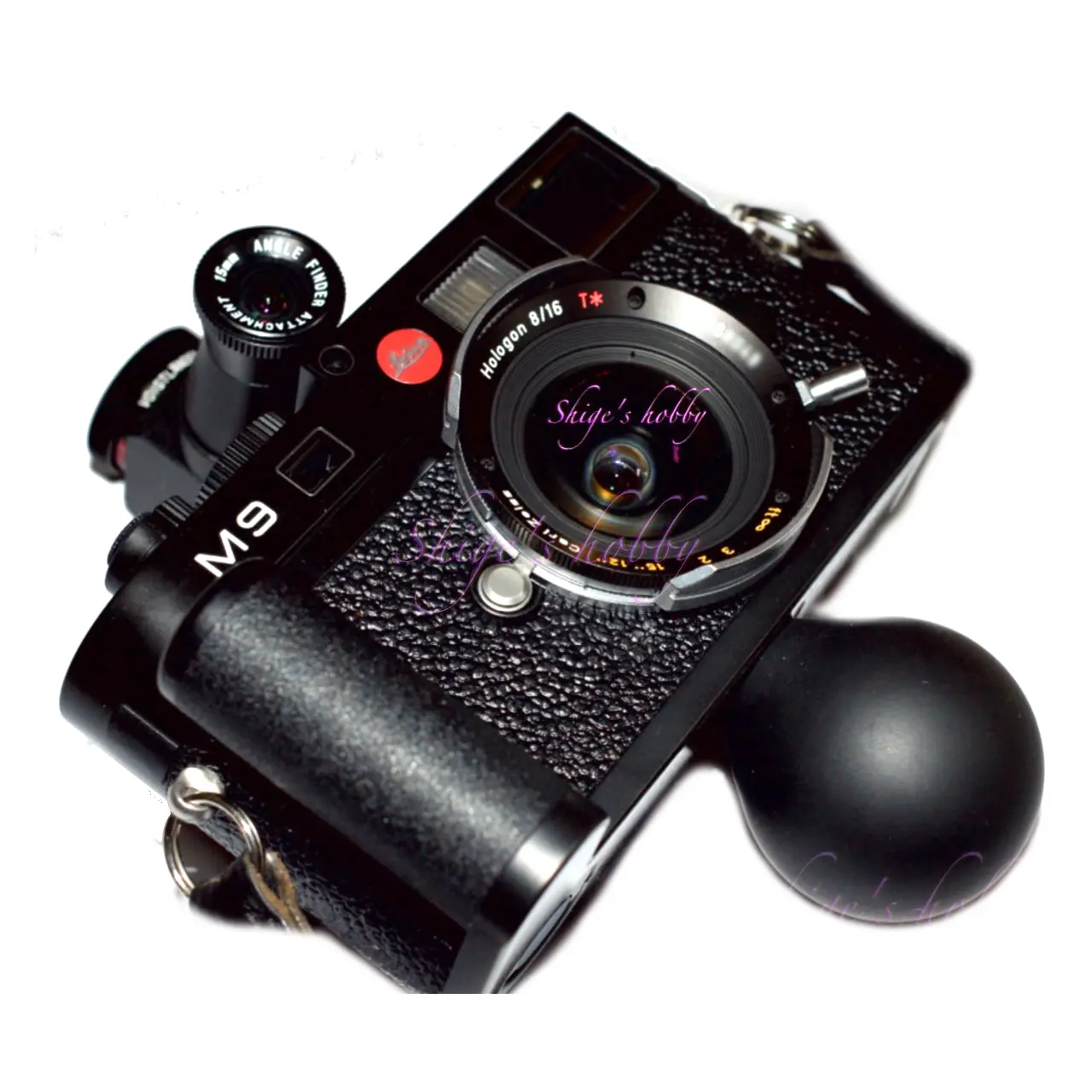
1.概要
ホロゴン16mmは、1994年に京セラがコンタックス G1とともにリリースしたマニュアルフォーカスレンズ。
Ms-optics(宮崎光学)にてライカ Mマウント(レンジファインダーカメラ距離計非連動)に改造されたレンズについて紹介する。
レンズスペック、フィルムで使用した際のレポートはリンク先を参照のこと
2.使用感
本レンズはCONTX Gシリーズのオートフォーカス(以下、AF)に対応しないマニュアルフォーカス(以下、MF)レンズだ。そのため、レンズ鏡筒にフォーカスレバーを備えている。このため、フランジバックが近いライカMマウントにマウント変更がおこなわれたレンズを見かける。
| レンズマウント | フランジバック |
| コンタックス G | 29mm |
| ライカ M | 27.8mm |
所有しているレンズは、Ms-optics(宮崎光学)でGマウントからMマウントへ変更したレンズだ。
Ms-optics(宮崎光学)のMマウント・レンズ改造はライカM型レンジファインダーカメラの距離計に連動するという特徴があるが、このレンズはレンズマウント部に空間がないため、マウント部品の取り替えだけとなっており、ライカM型レンジファインダーカメラの距離計には連動しない。
そのため、ライカ M9、EPSON R-D1では、目測での使用となる。ピントが不安なときはピントをずらして複数枚撮影するピントブラケットか、プレビューで確認して再撮影となる。
F8のくらいレンズとはいえ、デジタルカメラの撮影結果はフィルムカメラの撮影結果よりピントがシビアに確認できてしまうため、ライブビューの使えるカメラであれば、それを使うのが無難だ。
また、ライカ M9のセンサーは周辺部に紫色のカラーキャストを起こす。画像修正ソフトで修正するか、色を捨ててモノクロームで使うことことになる。
ライカM9ではカメラを構えた際に指写りを回避するため、ボトムグリップを使用していた。また、ファインダーはフォクトレンダーのアングルファインダーに15mmのアタッチメントを付けて、構図確認に利用していた。
センサーサイズの小さい、エプソン R-D1は周辺部が強制的にカットされるため、カラーキャストは目立たない。そのかわり、35mm判換算は、焦点距離16mm*1.5で、焦点距離24mm相当のレンズとなる。 R-D1の構図確認は、24mmもしくは25mmの外付けファインダーを使用していた。
興味本位からHASSELBLAD X2Dに装着して数枚撮影したところ、イメージサークルは圧倒的に足りていないがカラーキャストが無いことに驚いた。晴天下であれば十分に実用できそうなのでときどき持ち出したいと思う。それにしてもX2Dに装着した姿は美しい。
このレンズは後玉が出っ張っているので、ライカのシャッター膜にかかりそうな気がするが、筆者が使った範囲だが、デジタルMマウントカメラではEPSON R-D1、M8、M8.2、M9、M typ240で問題なかった。
しかし、シャッター膜ギリギリのところにレンズガードがくるため、膜がたわんだりゆがんだりすると事故につながる危険性がある。
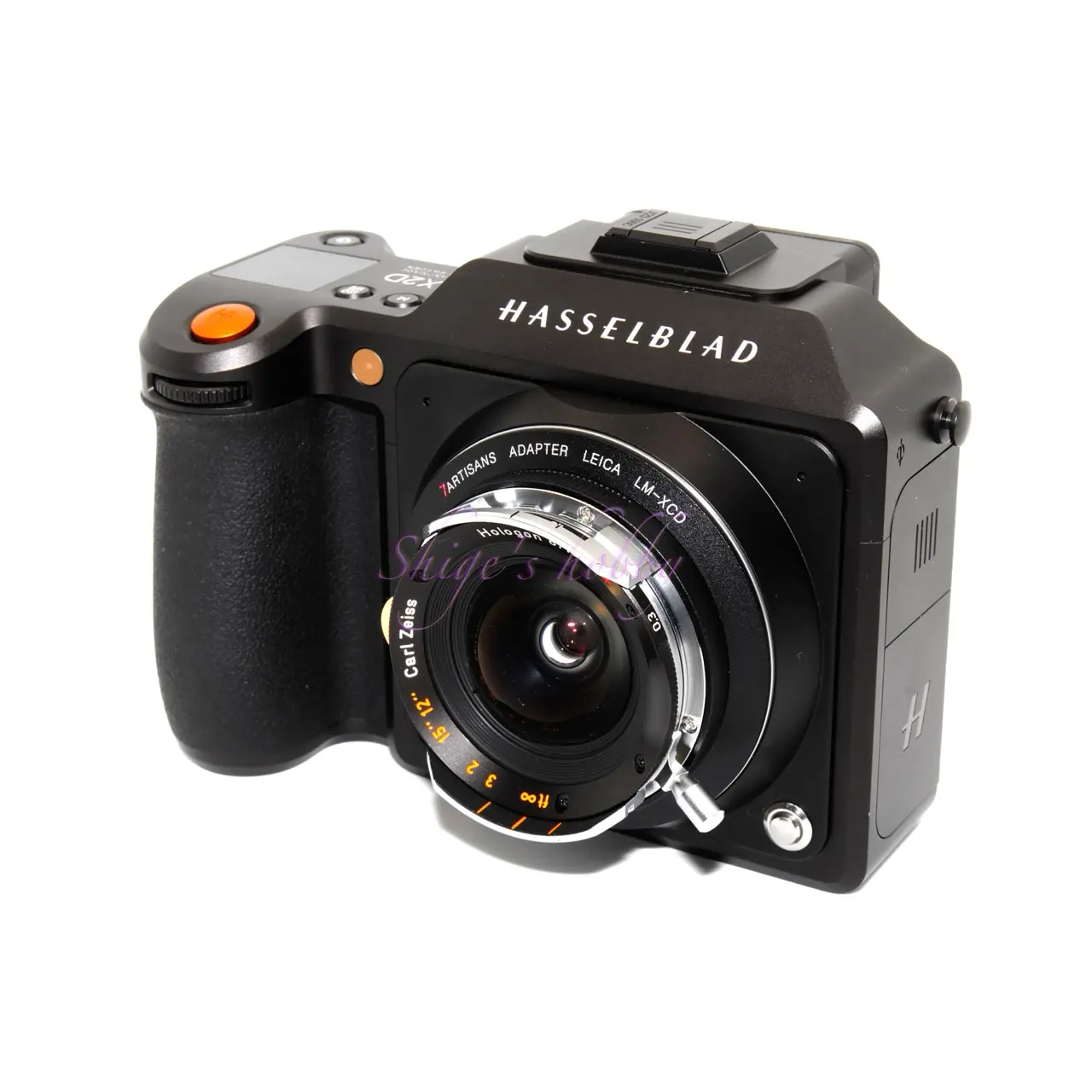
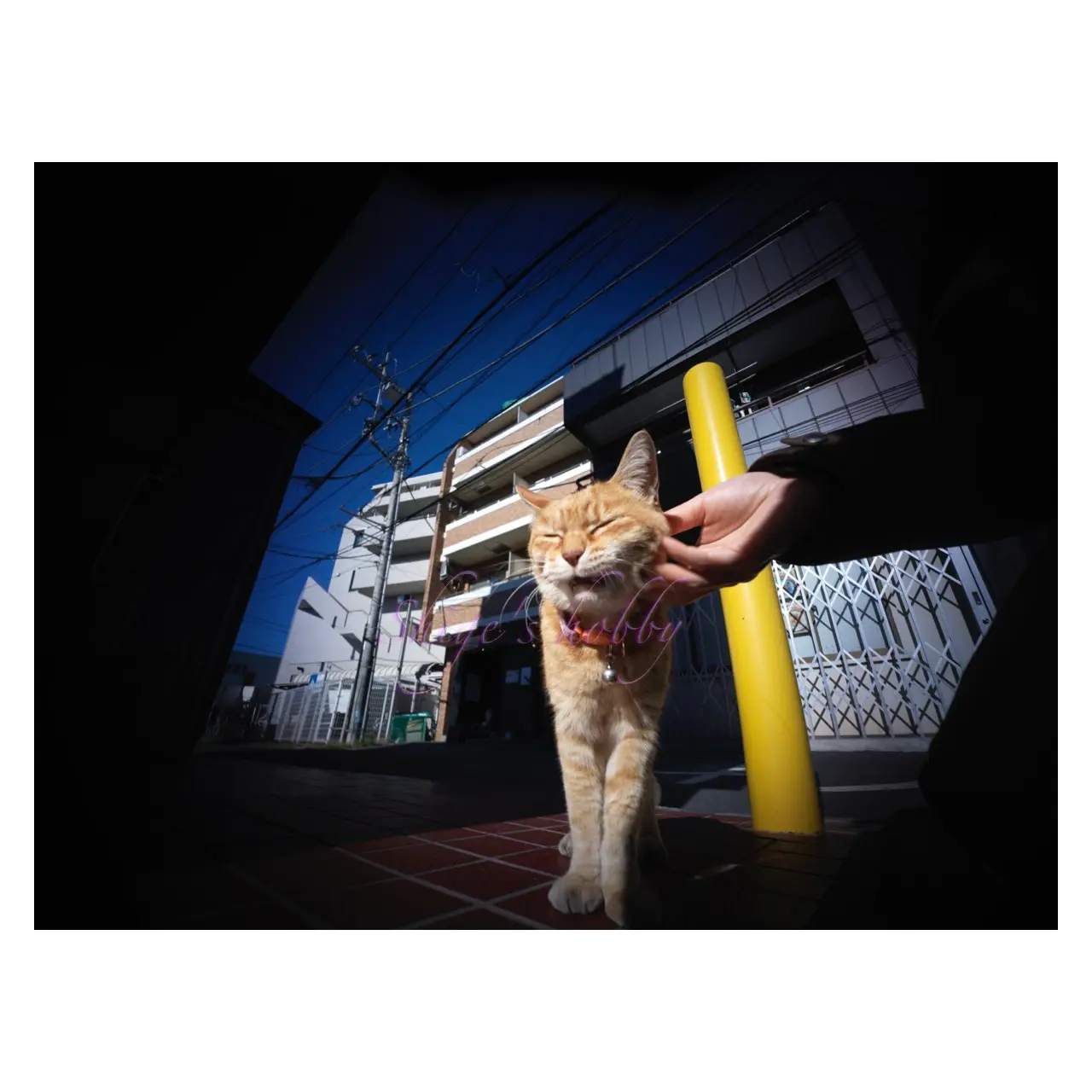
レンズスペックは絞りF8固定で暗く、周辺減光も大きい。そのため、それを抑制するためのF値=F16と暗くなる専用のグラデーションフィルター 4Xを装着しなければ、周辺まで光量の整った画像を得ることができない。
3.まとめ
結論としてHOLOGON 16mm Mマウント改造をまとめると、Mマウントにすることにより各種カメラへの装着性が高まりGマウントで使うよりも汎用性が上がる。
この薄くコンパクトな16mmは歪みもないため表現の幅を広げるにはよいレンズだ。
しかし、フィルム面に後玉が相当近づくためカメラによっては装着できない場合、自動露出では正しく測光できない場合があり、使用する際にはマニュアル設定での撮影が必要になる。デジタルカメラの場合はカメラに装着できたとしても、画像周辺部の大きな減光、カラーキャストが発生する場合があるため、使いづらいことが考えられる。
仕様・レンズ比較
普通にカメラボディを握って撮影していると、撮影結果の端に指が映り込んでいることが何度かあった。とくにフィルムカメラは撮影結果の確認が現像後となるため失敗に気がつきづらいため、カメラにボトムグリップをつけて使うのが無難だ。
前玉がとても大きく美しいこのレンズは、実用性はなくとも眺めるだけで満足できることと、Gレンズ改造品を手元でコンプリートしているため、使う頻度は限りなく少ないがキープしている。
中古市場では、オリジナルのGマウント、改造Mマウントの両方をみかける。
基本的な実用性が低いため売れないか、購入者がすぐに手放していると推察される。
筆者の個体はフィルム時代に購入したので中古で10万円を切る価格で購入できたと記憶している。Mマウント改造費用を含めて10万円程度というところだろうか、現在中古では20万円前後で流通しているので価格は高めで安定しているようだ。
数々のレンズのオマージュをリリースする中華勢だが、市場ニーズの低さとレンズの質量が大きく加工もめんどくさそうな本レンズは復刻する気にはならないだろう。
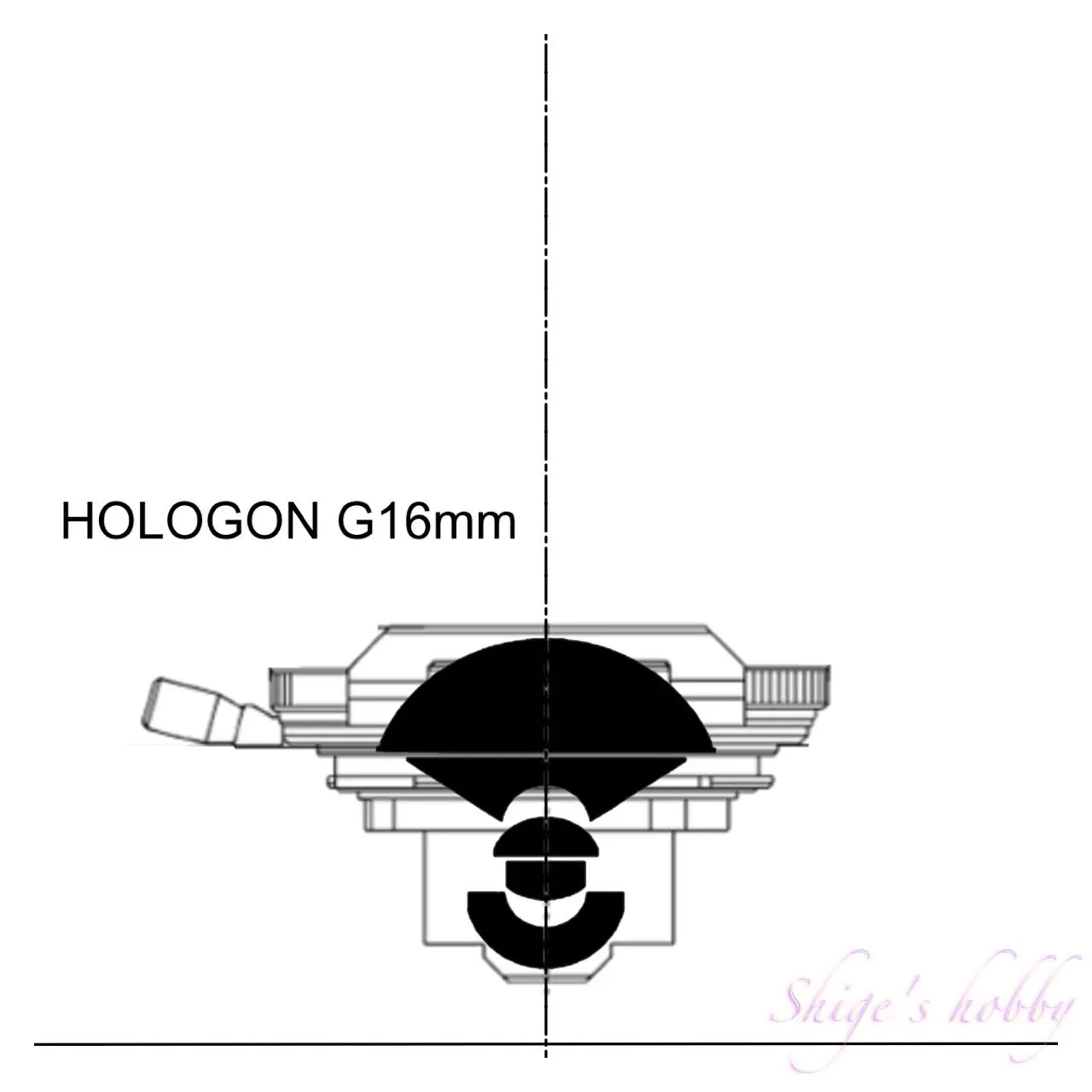

- レンズ構成図は各社の配付資料から引用し、サイズはこちらで調整しているため厳密ではない。
| 項目 | HOLOGON | HOLOGON |
| 焦点距離(mm) | 16.5 | 15 |
| 最大絞り | 8(固定) | 8(固定) |
| 最小絞り | 16(フィルター装着) | 16(フィルター装着) |
| 絞り羽根 | – | – |
| レンズ構成 | 3群5枚 | 3群3枚 |
| 最短撮影距離(m) | 0.3 | 0.2 |
| レンズ長(mm) | 11 | – |
| レンズ最大径(mm) | 57 | – |
| フィルター径(mm) | – 専用NDフィルターあり | – 専用NDフィルターあり |
| 重量(g) | 120 | – |
| フード | なし | なし |
| マウント | CONTAX-G | ライカM |
| 製造年 | 1994年 | 1972年 |
参考情報
- WikipediaによるHOLOGON レンズの説明ページ
- The Map Times【オールドレンズの沼地】Leica HOLOGON M15mm F8とは?
- Zeiss Photography Historical Products
- リンク先ページ中段にCONTAX Gレンズのデータシートあり)
- CONTAX G HOLOGON T* 16mm with Film camera ・Shige’s hobby
更新
- 2025.05.22
- 2025.3.1
- 2024.07.31
- 2024.02.15
- 2022.01.24
広告
- 本サイト表示の広告詳細は本リンク先に記載、本文中斜め文字のリンクはアフィリエイトリンク

Amazon Prime Sale

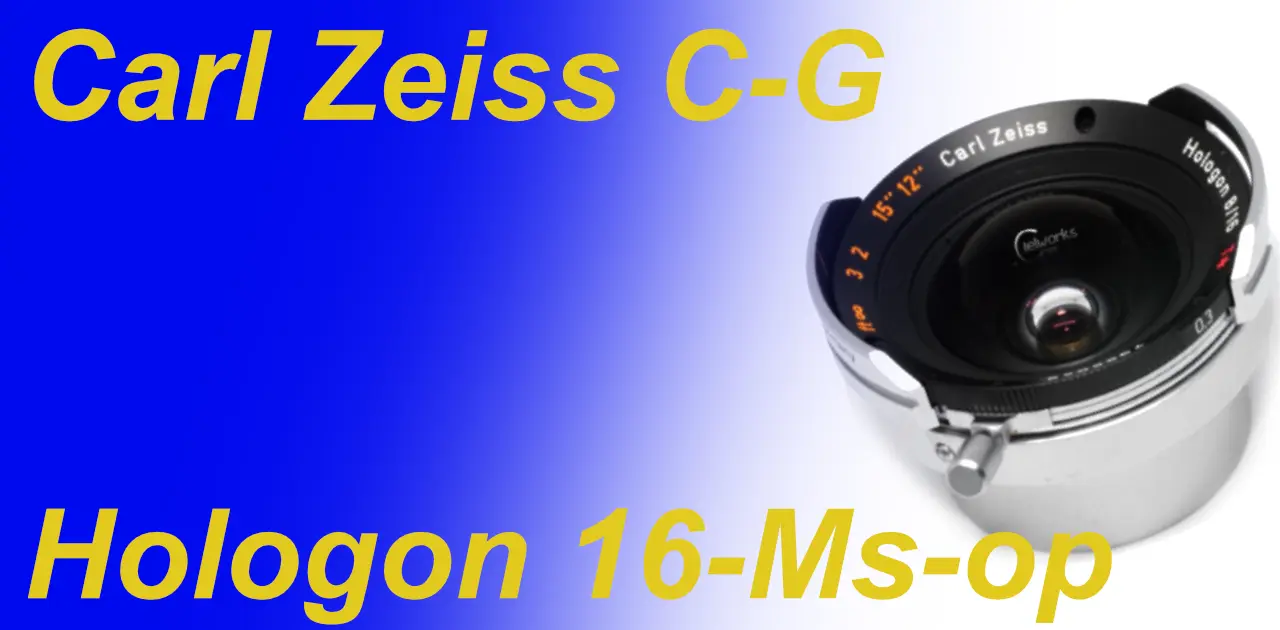

![[商品価格に関しましては、リンクが作成された時点と現時点で情報が変更されている場合がございます。] [商品価格に関しましては、リンクが作成された時点と現時点で情報が変更されている場合がございます。]](https://hbb.afl.rakuten.co.jp/hgb/235400df.ee477efc.235400e0.6479c974/?me_id=1217830&item_id=11084313&pc=https%3A%2F%2Fthumbnail.image.rakuten.co.jp%2F%400_mall%2Femedama%2Fcabinet%2F9373%2F2119340849373_1.jpg%3F_ex%3D128x128&s=128x128&t=picttext)
![[商品価格に関しましては、リンクが作成された時点と現時点で情報が変更されている場合がございます。] [商品価格に関しましては、リンクが作成された時点と現時点で情報が変更されている場合がございます。]](https://hbb.afl.rakuten.co.jp/hgb/0f8addca.6e306624.0f8addcb.b7dc3dde/?me_id=1191940&item_id=11740300&pc=https%3A%2F%2Fthumbnail.image.rakuten.co.jp%2F%400_mall%2Fnaniwa%2Fcabinet%2Fseco_sku05%2F2111020368280-01.jpg%3F_ex%3D128x128&s=128x128&t=picttext)
![[商品価格に関しましては、リンクが作成された時点と現時点で情報が変更されている場合がございます。] [商品価格に関しましては、リンクが作成された時点と現時点で情報が変更されている場合がございます。]](https://hbb.afl.rakuten.co.jp/hgb/23d4811d.689853af.23d4811e.26473ef8/?me_id=1398095&item_id=10023973&pc=https%3A%2F%2Fthumbnail.image.rakuten.co.jp%2F%400_mall%2Fakiba-r%2Fcabinet%2F223500%2F223061-5.jpg%3F_ex%3D128x128&s=128x128&t=picttext)
Be First to Comment